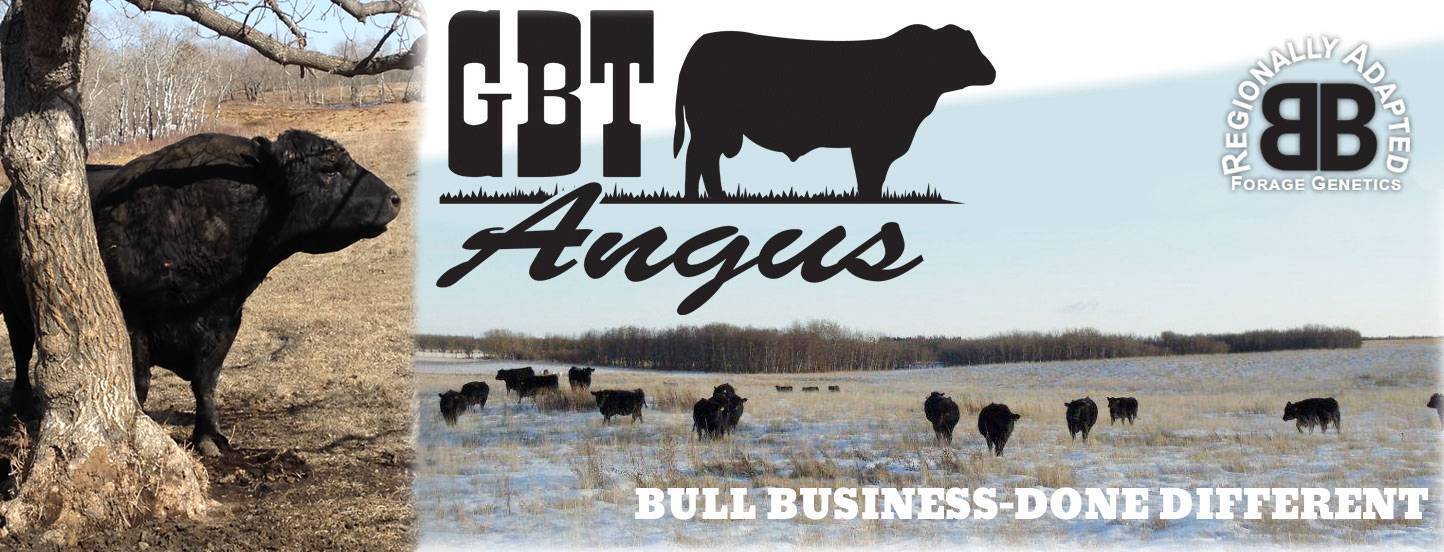|
Our Ranching History:
We represent the 5th generation and our boys, Brett and Carter, the 6th generation on this original settlement, dating clear back to the 1880's. Prior to our entry into the registered Angus, our families were mostly in grain and commercial cattle production, except for Cheryl's great grand father, Charlie Clements. He developed and maintained a herd of registered Herefords under the name, Pine Springs which Cheryl's great uncles continued for a period before the herd slowly turned into a commercial base.
The beginnings of GBT Angus started with purchases of several '91 model bred heifers from some local breeders. Those early cow families that ended up staying the course and we still have today are: the Lady Fanny's (18A from Dan Howell's Hi Lo Angus), Mayflower (29C from George and Dale Easton's Kenwaw and Eastondale herds), Blossom (7E from Bryce's Bar B Ranch), Daisy (21E from Jim Easton's 2J Angus), Cassie, Lady Lynn (51F, 53F respectively, from Birnie Biever's Angus), Luetta (10K from Halcyon Angus), Jestress (11P from Aitken Acres), Cleo (621J from KBJ Round Farms), Lass (1M from Roy Lohses' Spring View herd). Other tribes include the Rosebud (1K), Princess (6115), Ruby Belle, and a separate strain of Lady Fanny's (517 and 1134 from Harvey Bowerman’s BBAR herd). The most recent additions happened via the Spring Valley Ranch dispersals in 2023 and 2024. It will be an interesting test to see what lines will still be present, another 30 years from now!
The name and herd prefix “GBT” was derived from our initials Gerry (my stepfather), Betty (my mother) and of course myself, Trevor. From those early beginnings until 2002, we operated at the home place at Kisbey, where I grew up.
Cheryl and I met in 1998. Cheryl finished high school then attained her veterinarian technologist course in 2001. We rented a place in 2002 and with the cow herd in tow, set out on our own, in the Wawota area. 2003 was a big year for us as we got married and were welcomed to the family’s original homestead place. Fortunately, or unfortunately, 2003 was also the dreaded surfacing of BSE. Something I never want to live through again, but I believe was the single most influential event that paved the course forward for us. The school of hard knocks was in session. We learned how to trim the fat, adopting low input strategies as a means of economic survival. We quickly learned that the only way forward was running a bare bone, no frills operation where every cow had to be accountable. Without exception, free loaders found another purpose elsewhere.
Fast forward to today, our cowherd is the product of those no-nonsense management principles. We are humbled to have fellow producers look to us as a place to source low input genetics. I’d like to take credit and say that it was all in the cards and thoughtfully planned out, but fact is, it’s merely a reflection of economic survival and the unwillingness to fail at our dream to ranch.
|
 |


